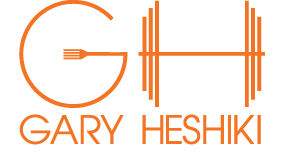Walk through your local gym you'll see dozens of personal trainers stretching their clients. No doubt this has been going on forever, but is technically outside of the personal trainer's scope of practice.
Scope of Practice- Procedures, actions, and processes that a healthcare practitioner is permitted in undertaking.
Scope of Practice for Personal Trainers (according to NSCA)
"Developing and implementing appropriate exercise programs, assisting clients in setting and achieving realistic fitness goals, and teaching correct exercise methods and progression.”
Nowhere in there does it mention any sort of muscle manipulating techniques.
Ouch That Hurts
Hey can you move back to that other spot...a little lower....YEAH! OUCH! You got it.
This was a typical exploratory palpation session with clients whenever they were unable to release muscle on their own and so it made sense for me to get it out for them so we could get back to training. When I started doing bodywork I had already been a trainer for over 5 years and was decently versed on anatomy and biomechanics.
This all is a rationalize for what I was doing, which was outside the guidelines of my liability insurance and scope of practice. The results I got were positive across the board, but I also knew I wasn't allowed to do what I was doing. The more injuries I would encounter, the better I got at feeling healthy tissue and fibrous restrictions in the fascia and muscles. Though in the back of my mind I knew what I was doing was illegal.
I observe dozens of coaches, many of whom I see jam their elbows and fingers in areas where they shouldn't be. And not because now that I'm a manual therapist I'm on my high horse but because they're actually pressing down, rather hard I might add given the discoloration of the skin around said area, into a place where there's way too many nerves or organs.
Pot Meet Kettle
I will never tell any other coach they shouldn't be placing their hands on their clients, because that would make me a giant hypocrite. I do however advise these coaches to exercise ALOT of caution. In an effort to add value to sessions coaches range from the harmless assisted static stretching to downright dangerous let me dig my elbow into your anterior triangle.
What I've Learned
I Didn't know WHY only how
A Manual therapist, massage therapist or LMT has undergone more extensive training than personal trainers where it pertains to understanding of how and more importantly WHY to work in a given area. They learn more manual muscle testing and specific assessments to address movement compensations. I could copy a technique but didn't fully grasp the methodology behind it.
Most trainers who perform assisted soft tissue via foam roller, ball or roller stick think: harder is better. It's not.
Getting work done on you doesn't in turn show you how to treat your clients
Copying a given technique performed on you might help YOU, but could injure your client. In the same way you wouldn't give a 65 year grandma the same exercise protocol a 25 year old would receive, the same goes for soft tissue manipulation. In the past I've seen coaches receive a quickie treatment only to see them performing the exact thing on their clients that same evening.
I hadn't earned the right to put my hands on clients. Trainers are not therapists.
Many colleagues who are both manual therapist and trainer had to juggle massage therapy school and a full slate of clients at the same time. Depending on where they're located, schooling can range from 500 hours to over 1000 hours. And while this may be a lot or a little depending on how you look at it, it's a large commitment for anyone with full time obligations.
Trainers are not physical therapists. Most of the corrective exercises seen today don't work because the coach implementing them lack an understanding that the issue needs both manual therapy and corrective exercise.
I of course will not fool myself thinking that I am anywhere near the level of a DPT (Doctor of Physical Therapy) either. I always had a firm grasp on anatomy, or so I thought. I came to see that I lacked a comprehensive understanding of:
- Origin and Insertion sites
- Layers above and below muscles
- Feeling the difference between muscle and organ
- Progressions for treatment
- Contraindications with degenerative and acute diseases or injuries
I understand now I had not earned the right to put my hands on a single client because I had not committed to fully understanding the topics above. I had not put in the time, literally. I thought because I could recite muscles and actions off the top of my head that I could manipulate muscles. I was wrong. On one hand all the clients I've helped has allowed me to get a head start on my education in treating soft tissue restrictions but I also understand I probably shouldn't have ever laid a hand on a single person, no matter the outcome.












